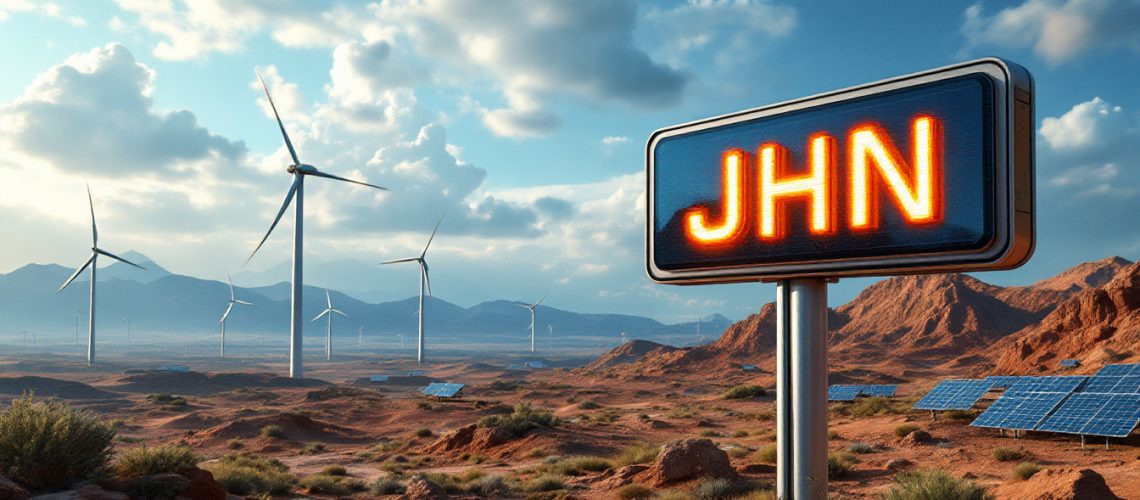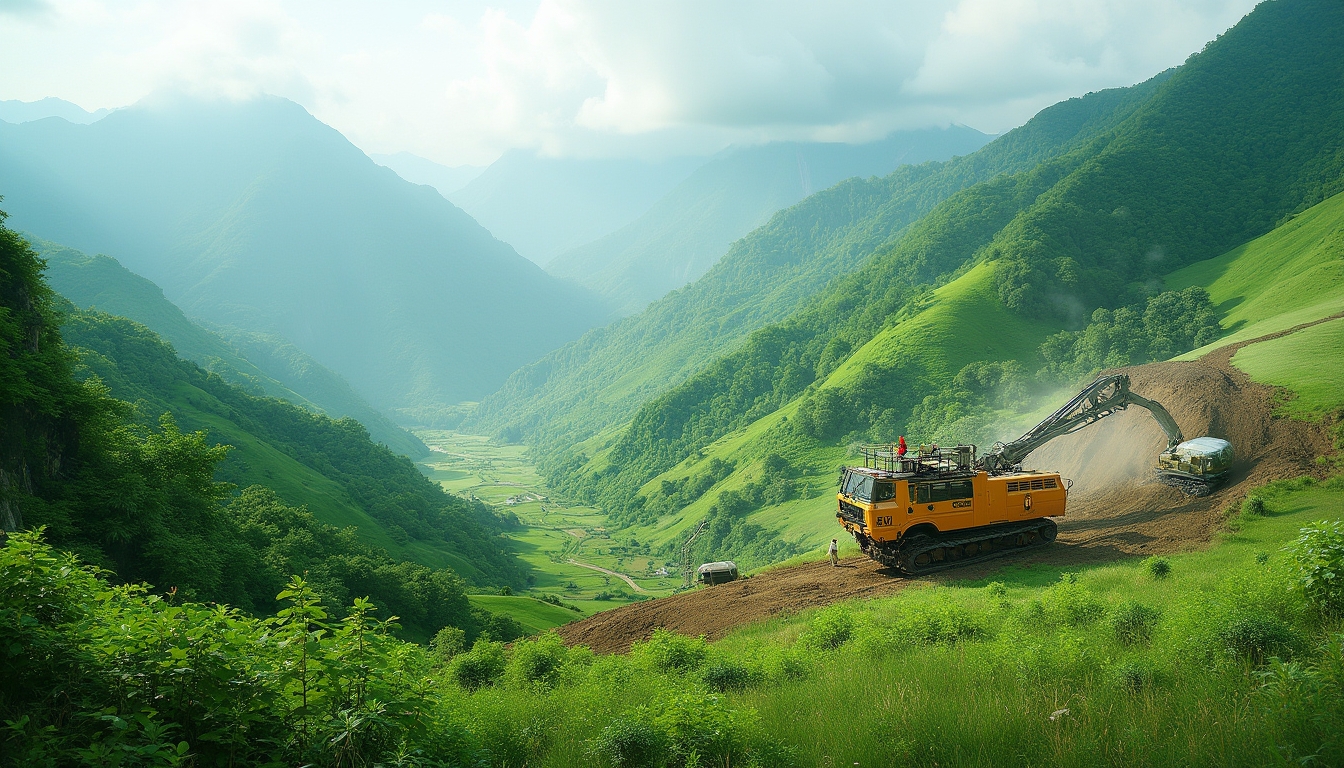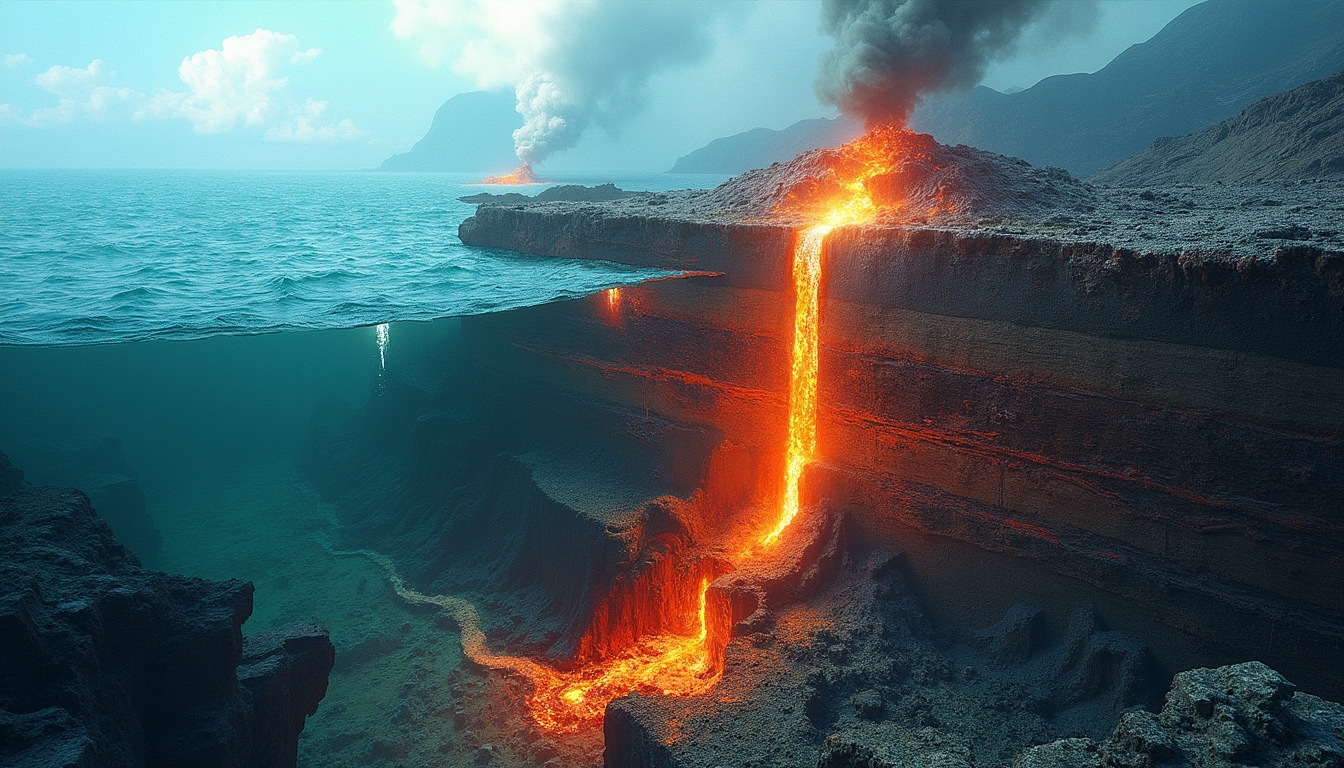John's Group Limited
- ASX Code: JHN
- Market Cap: $1,196.8M
- Shares on Issue (SOI): 61,037,351 shares
- Cash: $59.5M (as of 30 September 2024)
- Enterprise Value (EV): $1,137.3M
Why Is the Grandis Gas Project a Strategic Asset for John’s Group Limited?
The Grandis Gas Project, encompassing the strategic tenements ATP 2044 and ATP 2077, represents a pivotal component of energy development within Australia. With both tenements held at a 100% working interest, John’s Group Limited maintains full control over operations and future strategic planning. This autonomy enables the company to effectively steer the project in alignment with market demands and technological advancements.
The project's focus on unconventional energy resources, specifically deep dry coal gas, underscores the industry’s transition towards alternative energy sources. This shift is crucial as Australia, and indeed the global community, seeks to diversify energy portfolios to include cleaner and more sustainable options.
Recent assessments of the Grandis Gas Project's significant resources have further solidified its standing as an essential contributor to Australia’s energy sector. The independent certification by ERCE has validated a maiden 2C contingent resource of 245 billion cubic feet (BCF) of recoverable gas from the deep dry coals. This achievement not only showcases the asset’s productive potential but also highlights its vast capacity for resource expansion.
Notably, gas in place estimates have soared by 120%, now reaching an impressive 58,137 BCF. Additionally, recoverable gas resources have increased by 17% to 1,715 BCF on a 2C contingent basis. This substantial untapped potential positions the Grandis Gas Project as foundational to John’s Group Limited's growth ambitions and plays a significant role in meeting the nation's energy needs.
Development in deep dry coal gas aligns with the global pivot towards cleaner energy solutions. As markets worldwide focus on diversifying energy sources and favour low-carbon alternatives, the project's emphasis on unconventional gas positions it at the forefront of this transition. By capitalising on its extensive resources and technological advancements, the Grandis Gas Project is poised to significantly contribute to the demand for clean, reliable gas.
What Sets the Recent Certification at Grandis Apart?
The independent certification conducted by ERCE provided a detailed assessment of the Grandis Gas Project's deep dry coal resources, marking a milestone achievement for the project. The contingent certification is notable for being the first of its kind within the Taroom Trough, a region previously untapped at these depths. This pioneering achievement not only sets a precedent for future exploration in the region but also highlights the untapped potential of deep dry coal resources in unexplored zones.
The report confirms the viability of recovering gas from coal seams situated 3,698–3,786 metres below the surface—a depth that presents both challenges and opportunities. Extracting gas from such depths requires advanced drilling techniques and robust engineering solutions to withstand the high-pressure environments. Nevertheless, production testing and stimulation have successfully validated the feasibility of extracting gas from these deep strata, instilling confidence among investors and potential stakeholders.
A unique aspect of the production testing includes detailed chromatographic analysis, which revealed distinguishable characteristics between coal gas and sandstone gas. This differentiation is significant as it supports the potential for isolating and optimising operations across varying gas deposits. By understanding the specific properties of each gas type, the company can tailor extraction and processing methods to maximise efficiency and yield.
The certification not only outlines the project’s resource potential but also provides clarity on how it can contribute to clean energy goals. The results establish a technical framework for expanding recovery operations, paving the way for economic feasibility considerations and collaborative ventures across the basin.
How Do the Grandis Project Resources Compare Economically?
Economic feasibility is a defining factor for any resource project, and the Grandis Gas Project excels in offering a competitive edge. The project's gas composition is methane-rich at 93%, with a minimal carbon dioxide (CO2) content of just 1%. This high-quality gas minimises the need for extensive processing and purification, thereby reducing operational costs and allowing for faster time-to-market. Moreover, the gas readily meets pipeline specifications for end-use distribution, streamlining the supply chain from extraction to customer delivery.
The utilisation of modern extraction techniques, including vertical, deviated, and horizontal well stimulation, significantly enhances cost-efficiency. These methods allow for greater access to the gas reserves with fewer wells, reducing drilling costs and surface footprint. Despite recovery rates being conservatively estimated with a <1% gas recovery factor, there is substantial upside potential as technology advances. Improved recovery methods could dramatically increase yields, bolstering the project's profitability and extending the life of the operation.
Another economic advantage is the project's minimal requirement for additional drilling. The tight sands and deep coals targeted are located within zones already explored during previous drilling campaigns. This reduces capital expenditure associated with exploration and appraisal, enabling the company to allocate more resources toward production optimisation and technological enhancements. Such efficiencies not only contribute to the project's economic viability but also align with sustainable development practices by minimising environmental impact.
Understanding Deep Dry Coal Gas: Breaking Down the Basics
Deep dry coal gas represents a frontier in the energy sector, bridging the gap between traditional fossil fuels and the increasing demand for cleaner energy sources. Unlike conventional coal seam gas (CSG), deep dry coal gas extraction does not involve significant water production. This absence of extensive water content simplifies the extraction process and mitigates environmental concerns related to water management and disposal.
It consists of methane-rich natural gas stored in hard coal seams located at significant depths, typically exceeding 3,500 metres. These coal seams are characterised by high purity methane content, requiring minimal processing to meet market demand. The high purity of methane in deep dry coal gas, combined with minimal impurities, reduces the need for costly processing and treatment. This purity not only lowers operational costs but also results in a cleaner-burning fuel, contributing to efforts to reduce greenhouse gas emissions.
Extracting gas from such depths demands advanced drilling and stimulation technologies targeting harder geological formations. High-pressure and high-temperature conditions require robust equipment and precise engineering to ensure safe and efficient operations. Developments in drilling technology, such as directional drilling and hydraulic fracturing, have made it feasible to tap into these deep reserves.
Investment interest in deep dry coal gas is increasing due to its efficiency and alignment with the industry's shift towards renewable energy dominance. Its low carbon and high methane content make it particularly attractive for industrial and residential applications. Furthermore, its success in regions like the Taroom Trough could inspire similar developments across other basins with comparable geological features. As conventional gas reserves decline, and as the world moves towards decarbonisation, resources like deep dry coal gas offer a transitional energy solution that balances demand with environmental considerations.
Future Plans and Timelines for the Grandis Gas Project
Looking ahead, the Grandis Gas Project is focused on scaling its operations while integrating additional geological insights into its plans. As the company strategises its next moves, aligning with current trends and investment outlook in the energy sector, the project's substantial resource booking establishes a strong foundation for further appraisal and developmental activities.
Key steps in the near-term strategy include the identification of additional exploration targets within the Taroom Trough. The company plans to utilise advanced seismic imaging and geological modelling to pinpoint areas with the highest potential yields. This includes both deep coal seams and tight sandstone formations, which will receive further attention through exploratory drilling and testing.
Comprehensive feasibility studies will assess the most efficient ways to integrate these resources into the existing production framework. This involves analysing cost factors, technological requirements, and market dynamics to optimise the economic returns from both types of reservoirs. The studies will also evaluate the potential for scaling up operations to meet increasing demand for natural gas, both domestically and internationally.
Production expansion will involve further drilling programs, specifically designed to enhance recovery factors. The development of horizontal well designs aims to maximise gas extraction by increasing the contact area with the gas-bearing formations. Leveraging multi-zone stimulation techniques allows for the simultaneous extraction from multiple strata, enhancing efficiency and productivity. These advancements reflect a concerted effort to increase yield without imposing significant cost burdens on the project.
Furthermore, John’s Group Limited is exploring potential partnerships and collaborations to bolster its technical capabilities and financial resources. Engaging with industry leaders and technology providers could accelerate project development and introduce innovative solutions to enhance performance.
Investment Thesis: Why Should Investors Watch John's Group?
John’s Group Limited offers an investment case that intersects Australia’s growing energy needs with advancements in unconventional gas recovery. The Grandis Gas Project plays a central role in positioning the company as a leader in developing scalable, low-carbon energy solutions.
- First-mover Advantage: Delivery of the maiden contingent resources within the Taroom Trough deep dry coals establishes the company as an early leader in a previously untapped geological system. This unique positioning allows John’s Group Limited to capitalise on the lack of competition and set industry benchmarks in extraction techniques and resource management within the region.
- Extensive Resource Base: The overall gas in place across Project Grandis spans an impressive 58 trillion cubic feet (TCF). This vast resource base provides a long-term supply potential that can secure the company's revenue streams for decades. Incremental growth through improved recovery methods has the potential to multiply reserves over time, offering exponential growth opportunities and increasing shareholder value.
- Low-carbon Credentials: The high methane and low CO2 content of the recovered gas aligns with energy markets prioritising clean-burning fuels over traditional coal-fired options. This positions the company favourably among regulators and environmental groups, potentially easing the permitting process and enhancing its corporate social responsibility profile. Additionally, it opens up opportunities in markets with strict emissions standards.
- Technical Expertise and Credibility: Independent certification by ERCE ensures the accuracy of resource estimates, offering clear insights and mitigating development risk for investors. The company's demonstrated technical expertise in extracting deep dry coal gas strengthens its reputation and increases investor confidence. This credibility is crucial in attracting further investment and potential partnerships.
- Financial Stability: With $59.5M in cash reserves, the company remains well-positioned to fund exploration and development without immediate reliance on external capital. This financial independence allows for greater strategic flexibility and the ability to respond swiftly to market changes or investment opportunities. It also reduces dilution risk for existing shareholders.
Energy markets continue to evolve toward cleaner options and efficient utilisation of unconventional resources. John’s Group Limited has demonstrated a strong capacity to address these needs through its innovative and economically sound approach to development.
Conclusion
The Grandis Gas Project exemplifies the potential of unconventional gas resources in strengthening energy independence while supporting global efforts toward decarbonisation. With tested and certified recoverability from deep dry coal seams, the resource base provides a durable foundation for sustained growth.
John’s Group Limited has presented a clear plan for leveraging this opportunity, underpinned by its reserves, technical expertise, and financial health. For investors focused on long-term gains in the energy sector, the Grandis Gas Project offers a measurable entry point into one of Australia’s most promising resource developments.
As the energy landscape continues to evolve, projects like Grandis play a pivotal role in bridging the gap between traditional fossil fuels and renewable energy sources. By harnessing advanced technologies and prioritising environmental considerations, John’s Group Limited is positioned to make a significant impact on the future of energy in Australia and beyond.
Ready to Uncover Emerging Energy Opportunities?
Discover real-time insights into innovative energy projects like John's Group Limited with Discovery Alert's AI-powered notifications, designed to help investors navigate complex resource sectors and identify potential investment opportunities before they become mainstream. Start your 30-day free trial today and gain an edge in tracking emerging energy and mining developments.







